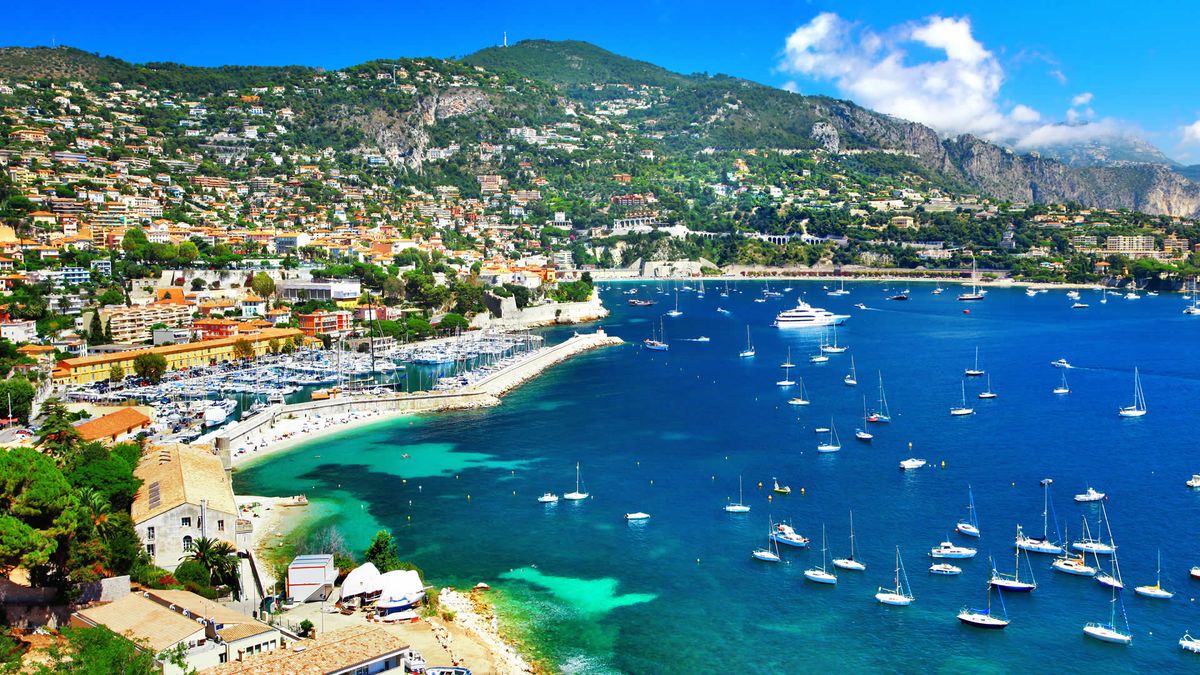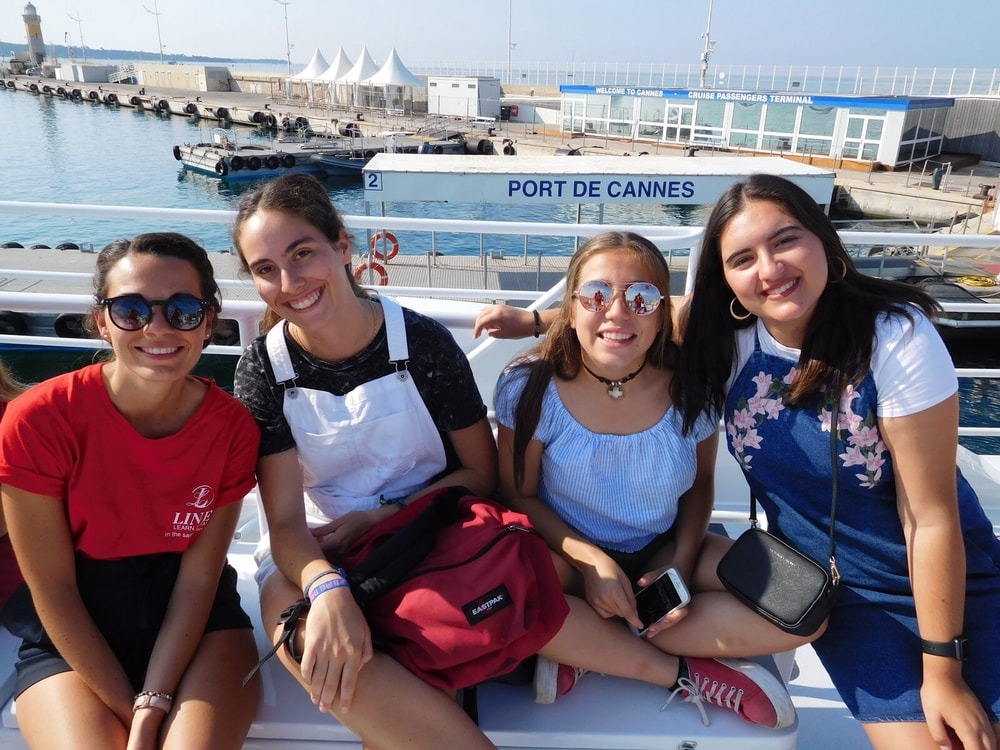Overview
Nice is located in the French Riviera, on the south east coast of France, between the Mediterranean Sea and the Alps. Nice is about 13 km from the principality of Monaco. With its mix of real-city action, old-world opulence, year-round sunshine and stunning seaside location, Nice is the unofficial capital of the Côte d’Azur, and a wonderful place to study and live. A magnet for sunseekers and VIPs since the 19th century, this enchanting coastal city has so much going on–fabulous markets, an enticing old town, glorious architecture and a wealth of high quality restaurants.
Why study French in Nice?
Life in Nice is liberal and lively, there is much in terms of excitement and nightlife for students.
The city is heavily influenced by its Mediterranean neighbors and it offers many fun excursions for locals and tourists alike. It was originally founded by the Greeks and sees many immigrants from both Italy and Spain. These foreign influences can still be seen in folk traditions like its music and its dance, which are showcased in many festivals throughout the year. Students and visitors will also appreciate Nice’s regional cuisine, which is largely influenced by its standing as a port city in the Mediterranean, and includes many dishes featuring seafood and local olives.
Language Schools and Camps in this Destination
Images of Nice, France
Things to Do and See During a Vacation Study
Promenade des Anglais
The Promedale stretches out alongside the Mediterranean waves and it is the perfect place for a study break, a stroll, and beautiful views.
Cours Saleya
The Course Saleya is a large farmers market located in Old Nice and a paradise for those who love to cook or eat.
Parc du Château
A wooded outcrop on the eastern edge of the old town, it has been occupied since antiquity. By climbing the staircase to the red-tiled rooftops, visitors can enjoy the best views of the city. Archaeological digs have revealed Celtic and Roman remains, and the site was later occupied by a medieval castle that was razed by Louis XIV in 1706.
Nice’s Beaches
The iconic beaches of Nice are not to be missed, especially with the blue waters of the French Riviera so close by. These beaches are pebbly instead of sandy, so visitors should bring a beach chair.
Musée d’Art Moderne et d’Art Contemporain
European and American avant-garde works from the 1950s to the present are the focus of this museum. Highlights include many works by Christo and Nice’s New Realists, Niki de Saint Phalle, César, Arman and Yves Klein.
Port Lympia
Nice’s Port Lympia, with its beautiful Venetian-coloured buildings, is often overlooked, but a stroll along its quays is lovely. Past the Parc du Château and Quai Rauba Capeu, there is a massive war memorial hewn from the rock commemorating the Nice’s 4000 citizens who died in both world wars.
Musée Masséna
Originally built between 1898 and 1901 as a holiday home for Prince Victor d’Essling, this building is an example of the grand neoclassical style with an Italianate twist, and one of the city’s iconic architectural landmarks. Now, it is a fascinating museum dedicated to the history of the Riviera, from holidaying monarchs to expat Americans, the boom of tourism and the enduring importance of Carnival.
Musée Matisse
This museum is located in the leafy Cimiez quarter, and houses a fascinating assortment of works by Matisse, including oil paintings, drawings, sculptures, tapestries and Matisse’s famous paper cut-outs. The permanent collection is displayed in a red-ochre 17th-century Genoese villa in an olive grove. Temporary exhibitions are in the futuristic basement building. Matisse is buried in the Monastère Notre Dame de Cimiez cemetery, across the park from the museum.
Musée National Marc Chagall
The work of the Belarusian painter Marc Chagall (1887–1985) is displayed at this small museum, which owns the largest public collection of the painter’s work. The main hall displays 12 huge interpretations (1954–67) of stories from Genesis and Exodus.
Cathédrale Orthodoxe Russe St-Nicolas
Built between 1902 and 1912 with its colourful onion domes and rich, ornate interior, it is the biggest Russian Orthodox church outside Russia. The cathedral boasts dozens of intricate icons.
Palais Lascaris
Baroque Palais Lascaris is a 17th-century mansion housing Flemish tapestries, faïence ceramics and religious paintings. On the ground floor is an 18th-century pharmacy.
Plage Publique des Ponchettes
Opposite Vieux Nice, it is one of the busies beaches in Nice.
Hôtel Negresco
A landmark building overlooking the grand sweep of the Promenade des Anglais, built in 1912 for Romanian innkeeper Henri Negresco. Its rosy-pink dome and lavish facade makes for a classic snapshot.
Observatoire de Nice
Visible in the dry hills to the north of Nice is the white dome of the city’s observatory, built in 1881 on the summit of Mont Gros.
Chapelle de la Miséricorde
This 1740 chapel is renowned for its exceptionally rich architecture.
Cathédrale Ste-Réparate
One of Nice’s baroque architectural gems, honouring the city’s patron saint.
How to Arrive at your Language Course
By Air
Nice Côte d’Azur International Airport is located 10 minutes from the city centre. Visitors can get to the airport by shuttle, coach, hired car or using a local bus.
By Train
The high speed TGV train connects Nice to Paris and Marseille. Trenitalia connects Nice to Italian cities like Milan, Genoa, Rome and Venice. Russian Railways run a weekly service from Moscow to to Nice all year round with stops in Vienna, Minsk and Warsaw.
By Coach
Eurolines/Baltour: connects Nice to several European cities.























